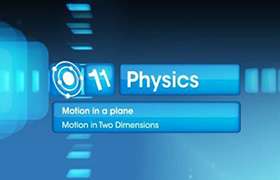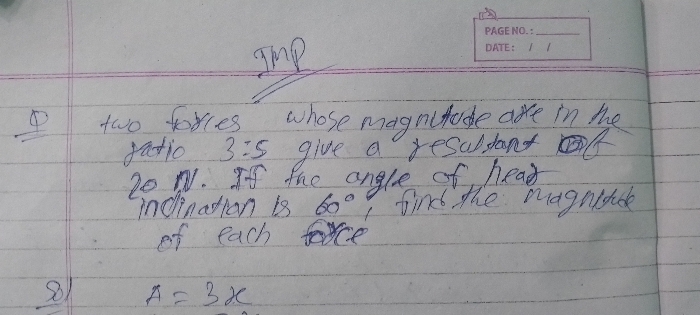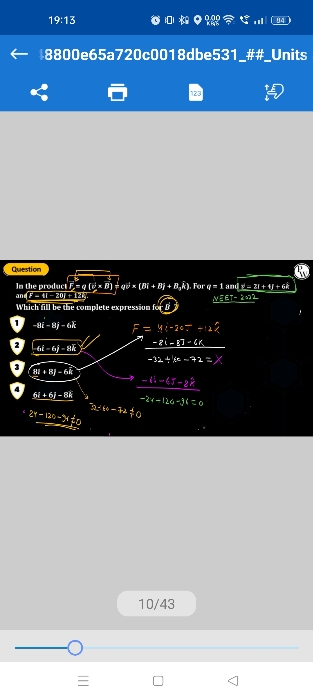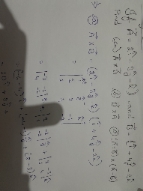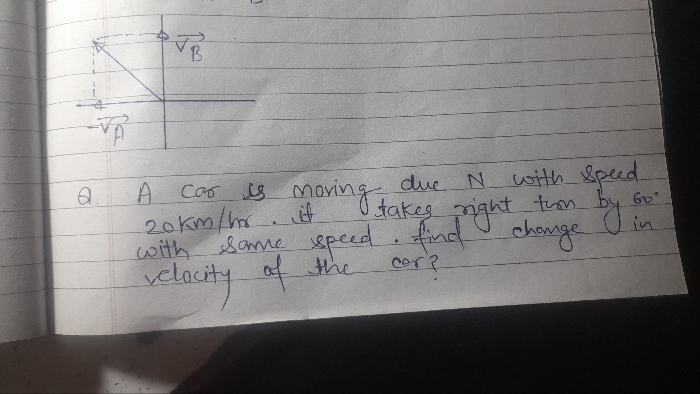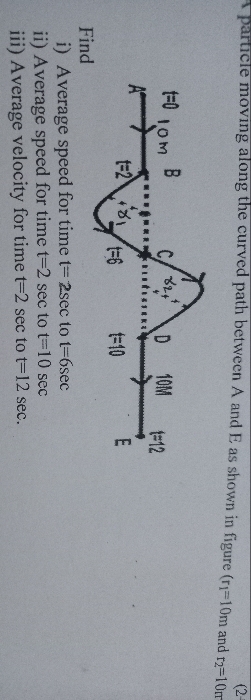CBSE Class 11-science Answered
two vector having equal magnitude A makes an angle "theta" with each other. find the magnitude and direction of the resultant.
Asked by riya sinha | 16 Jun, 2013, 08:12: AM
Pick the x axis as half way between the two vectors. Call the 2 vectors as vector A and vector B, with vector A below the x axis by an angle of ?/2 and vector B above the x axis by ?/2. So, the angle between the vector A and vector B would be ? (as given in the question).
So, now vector A makes an angle of -?/2 with the x axis (since its below the x acis) while the vector B makes an angle ?/2 (positive, since its above the x -axis). Now, if you will use normal vector arithmetic, get the x and y components of each
So, now vector A makes an angle of -?/2 with the x axis (since its below the x acis) while the vector B makes an angle ?/2 (positive, since its above the x -axis). Now, if you will use normal vector arithmetic, get the x and y components of each
(These vector components can be obtained by dropping a perpendicular from he tip of each vector onto x axis and then using the so formed right angled triangle to find the length of the perpendicular and base of the triangle. Please draw figure to understand it better, if you can't understand it without it. )
Ax = Acos(-?/2) = Acos(?/2) (since cos(-x) = cosx)
Ay = Asin(- ?/2) = Asin(?/2) (since sin(-x) = -sinx)
Bx = Acos(?/2)
By = Asin(?/2)
add the components to get the components of the resultant
Rx = 2Acos(?/2) (To add 2 vectors, one needs to add their x and y components separately)
Ry = 0
combine the components to get magnitude and angle.
with one zero, it is just the other component.
R = ?(Rx² + Ry²)
R = 2Acos(?/2)
angle = tan^-1[ (Ry/Rx) ]
With Ry=0, that becomes 0
Angle = 0
Ax = Acos(-?/2) = Acos(?/2) (since cos(-x) = cosx)
Ay = Asin(- ?/2) = Asin(?/2) (since sin(-x) = -sinx)
Bx = Acos(?/2)
By = Asin(?/2)
add the components to get the components of the resultant
Rx = 2Acos(?/2) (To add 2 vectors, one needs to add their x and y components separately)
Ry = 0
combine the components to get magnitude and angle.
with one zero, it is just the other component.
R = ?(Rx² + Ry²)
R = 2Acos(?/2)
angle = tan^-1[ (Ry/Rx) ]
With Ry=0, that becomes 0
Angle = 0
So, the resultant vector lies halfway between the 2 vectors and since, in our case, x -axis likes halfway between the 2 vectors, x -axis by itself becomes the direction of the resultant vector.
Answered by | 17 Jun, 2013, 04:04: AM
Concept Videos
CBSE 11-science - Physics
Asked by roshnibudhrani88 | 23 Mar, 2024, 05:52: PM
CBSE 11-science - Physics
Asked by vinitdubey7735 | 14 Mar, 2024, 11:21: AM
CBSE 11-science - Physics
Asked by shailajakandikatla19 | 18 Jan, 2024, 06:40: PM
CBSE 11-science - Physics
Asked by dhanshreekansyakar | 09 Jan, 2024, 11:57: AM
CBSE 11-science - Physics
Asked by banhisikhapanda49 | 07 Nov, 2023, 10:42: PM
CBSE 11-science - Physics
in a vertical circle of radius r at what point in its path a particle may have tension equal to zero
Asked by momintaufik26 | 13 Oct, 2023, 08:26: PM
CBSE 11-science - Physics
Asked by anshujaiswalname | 10 Sep, 2023, 01:29: PM
CBSE 11-science - Physics
Asked by subhashreeojha235 | 20 Jul, 2023, 11:22: AM
CBSE 11-science - Physics
Asked by preethiprithivi05 | 21 Feb, 2023, 09:28: PM
CBSE 11-science - Physics
Asked by hy9022075 | 11 Jan, 2023, 05:06: PM


